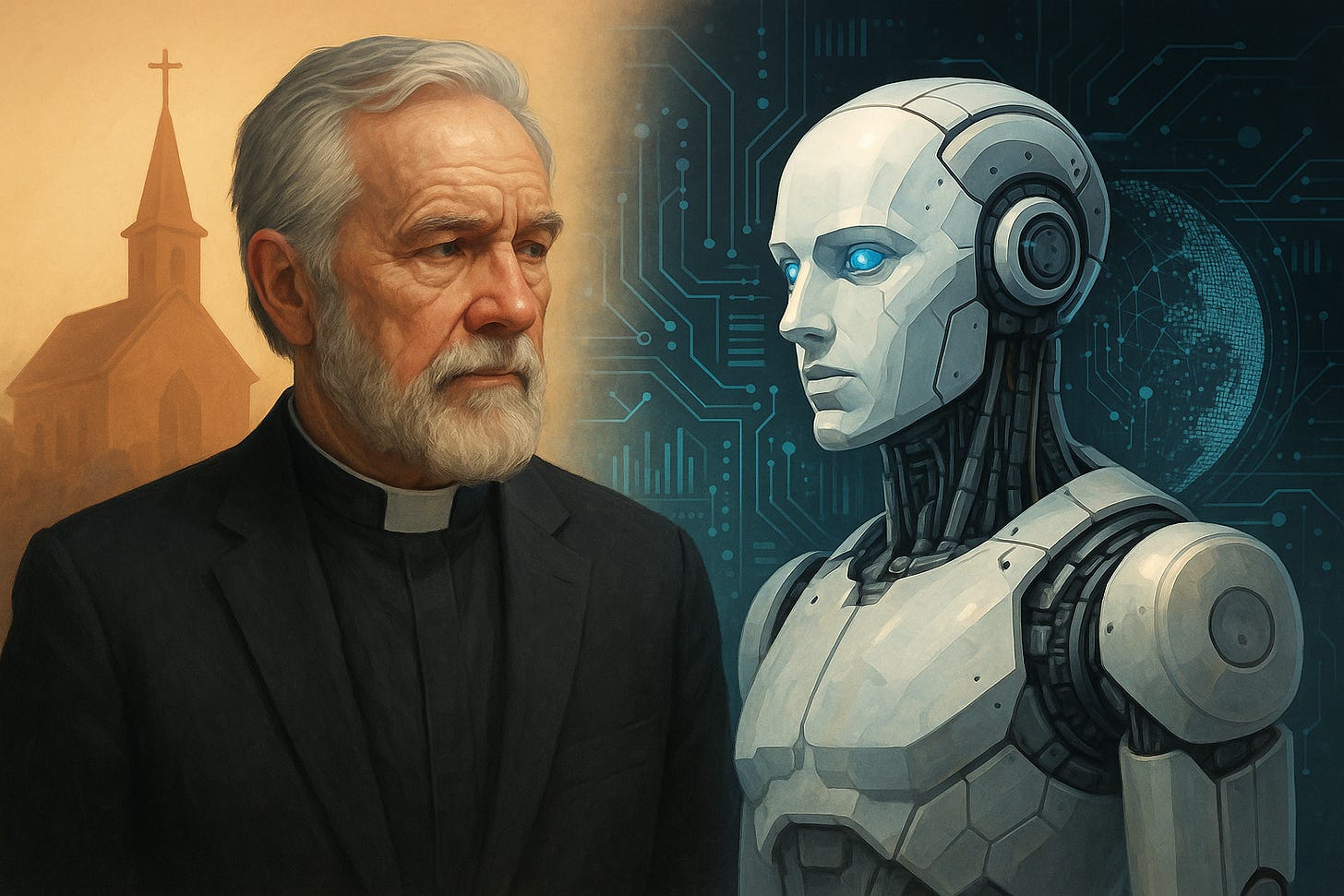From Novelty to Necessity: Rethinking Ministry and Identity
Churches and leaders now face a choice between reactive adaptation and purposeful transformation as technology and culture converge.
Let’s take a moment and synthesize the past week of posts!
The Shift We Cannot Avoid
Across the last twenty posts, a precise pattern stands out: yesterday’s experiments are now embedded realities. Generative AI has moved from the periphery to the operational core in both church life and major industries. Cultural pressures are compounding, with younger generations seeking authenticity and leaders wrestling with legacy, identity, and relevance. The recurring question is no longer what change is coming, but how you position yourself to lead or be led by it.
AI, digital platforms, and global trends do not wait for theological consensus or organizational comfort. Generative AI’s Second Act shows enterprise adoption rates are doubling year-over-year. In parallel, The Church’s Faithful Response to Generative AI as Infrastructure makes it clear that the church’s window to shape technology’s role in ministry is now, not in some distant future. Intentionality is no longer optional.
“The church must neither uncritically adopt nor reflexively reject AI, but engage with theological wisdom, pastoral discernment, and clear ethical frameworks.”
Leadership is About Second Curves
Every leader, whether in the church or marketplace, faces a similar arc. Arthur C. Brooks’s distinction between fluid and crystallized intelligence, explored in Going From Strength to Strength, reminds us that the strengths of early innovation give way to the lasting power of wisdom, service, and mentoring. The first curve celebrates adaptation and speed. The second curve values discernment, teaching, and lasting relationships.
Many leaders resist letting go of outdated methods, clinging to work styles that once brought affirmation or control. But the evidence suggests those postures falter in rapidly shifting contexts. The reality is that transition is not decline. Refusing to transition is the greater risk. The leader who welcomes change, reevaluates metrics of success, and leans into mentoring, teaching, or spiritual depth does not become less relevant. Instead, they embody the second curve’s strengths—deepening institutional wisdom just as external pressures increase.
Technology is a Means - Not the Mission
Our recent posts show increased technological adoption across church operations - AI for content, streaming services for worship, digital giving, and hybrid engagement models. But technology is only useful if held in service to relationships and spiritual formation. As How the Church Can Prepare for 2026 stresses, churches that stay mission-rooted and adapt their practices thoughtfully tend to thrive, while those who chase trends or fear technology fall behind.
The risk today is not technological irrelevance, but theological drift and relational disconnection. The core question for every ministry leader and church: Does this tool serve the Gospel, protect human dignity, and strengthen community? If not, wisdom is in restraint. If so, proceed with transparency and clear oversight.
“Authentic spiritual formation requires accountability, communal discernment, and the transformative challenge of truth spoken in love. These cannot be outsourced to algorithms.”
Presence Over Performance
A further thread running through these articles is the call to resist chasing perpetual novelty or a future “arrival.” As we saw in The Walk That Is Life, fulfillment and meaning depend not on reaching a technological or career finish line, but on attentive presence and wise stewardship of the current moment. Sustainable organizations and ministries find their strength not in busyness but in depth—relational faithfulness, clear priorities, and integrity in each present decision.
Scripture supports this call to presence and wisdom:
Teach us to number our days, that we may gain a heart of wisdom.” (Psalm 90:12 NIV)
“Do not worry about tomorrow, for tomorrow will worry about itself.” (Matthew 6:34 NIV)
Technological transformation or generational transition need not erode mission or meaning. Instead, they call for deliberate focus on what only humans, in community, can offer: love, mentoring, presence, and the courage to ask what truly matters.
Your Choice Shapes the Future
In the convergence of technological, cultural, and leadership transitions, intentionality is the difference between surviving and thriving. The leaders and churches who audit their practices now, invest in the next generation, and stay mission-rooted will not only adapt but become anchor points of wisdom in a rapidly changing context. The time to shape the infrastructure—of your ministry, your leadership, your life—is now.
Engage:
Reflect honestly: Where is your ministry or leadership driven by old patterns, and where are you actively investing in second-curve strengths?
Audit your technology: Does every digital tool serve relationship, transparency, and mission? Where does restraint build more trust?
Mentor and empower: Who are you training and investing in for the next curve, both technologically and spiritually?
Practice presence: How will you make space each day to attend deeply to people, not just to projects or platforms?
Share your best practice: What has helped your team or community bridge technological change and remain rooted in mission? Reply to this post with your story.


